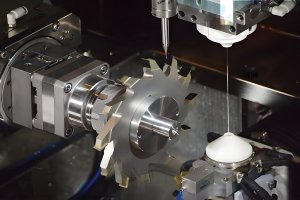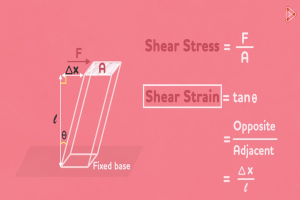Introduction to CNC Machining and Material Selection
Computer Numerical Control (CNC) machining revolutionizes the manufacturing space by enabling highly accurate, repeatable, and complex component production. In high-performance industries like aerospace and automotive, precision and reliability are vital, making CNC machining an indispensable solution. However, the success of this process pivots around one critical factor – material selection. The use of inappropriate materials could drastically undermine component durability, efficiency, and overall performance. Two such commonly used materials in these sectors are Titanium and Steel; both present distinct advantages and challenges.
- Titanium is revered for its impressive strength-to-weight ratio, desirable in applications demanding lighter yet robust components.
- In contrast, Steel, characterized by its unmatched hardness and thermal resistance lends itself well to heavy-duty applications.
The stark attributes between these two metals make the choice a careful balancing act guided by the specific requirements of the component’s end-use. Therefore, understanding their strengths and trade-offs is crucial to maximize the benefits of CNC machining effectively.
Understanding Titanium
Titanium is a silver-colored metal known for its high strength and low density, making it highly efficient in component manufacturing. Its properties include excellent corrosion resistance, ability to withstand extreme temperatures, and high tensile strength despite being lightweight. These attributes make titanium an ideal choice for the creation of high-performance components such as those used in aerospace industry. For instance,
- In aircraft construction, where both strength and weight are crucial factors, bulky steel parts are often replaced with robust yet light ones made from titanium.
- In jet engines, critical performance elements like turbine blades utilize titanium due to its exceptional heat resistance feature.
- In spaceships, components have to survive the corrosive environment of space – something titanium’s superb anti-corrosion property can handle.
All these particular cases exemplify why titanium supersedes steel when engineer precision, reliability, and durability become non-negotiable requisites in crafting high-performing components.
Understanding Steel: Definition and Properties
Steel, primarily composed of iron and carbon with a slight presence of other elements such as manganese, silicon, phosphorus, sulfur, and oxygen, leads the global manufacturing industry due to its unique combination of strength, durability, and shock resistance. It plays an indispensable role in machining and product fabrication wherein high-performance components require robust and resilient materials. For instance, steel varieties like stainless steel known for its corrosion proof quality, serves effectively under extreme environments where functionality cannot be compromised.
- Strength: Steel possesses remarkable tensile strength making it ideal for structural applications wherein significant forces are at work.
- Durability: Noteworthy wear-resistance characteristics of steel extend the life-cycle of components, hence reducing replacement costs.
- Shock Resistance: It absorbs energy content efficiently making it suitable for applications involving impact or sudden loads.
In conclusion, the choice of steel for manufacturing caters to multiple performance-related factors while ensuring cost-effectiveness, thereby justifying its widescale usage across various industries.
Detailed Comparison between Titanium and Steel in Terms of CNC Machining
When comparing titanium and steel in terms of CNC machining, it’s important to consider the following:
- Advantages of Titanium in Aerospace CNC Machining:
- Roughly 30% stronger and 50% lighter than steel
- Excellent resistance to high temperatures and corrosion
- Ideal for functional aircraft components and external parts
- Advantages of Steel in CNC Machining:
- Known for its strength, temperature resistance, and high machinability
- Widely used in machining and parts manufacturing
For professional CNC machining services, consider online CNC service.
Pros and Cons of Using Titanium for High-Performance Components
In the realm of CNC machining, both titanium and steel have their unique benefits and drawbacks when used for creating high-performance components. One significant advantage of titanium is its remarkably light weight coupled with exceptional strength – ideal for applications where durability and weight reduction are key factors. Also, it offers superior corrosion resistance, making it suitable for use in harsh environments. Furthermore, titanium maintains its structural integrity in extreme temperatures better than steel.
However, there are some challenges associated with using titanium in CNC machining. The main drawback lies in the difficulty to machine as compared to steel due to its high level of toughness and low thermal conductivity. This can lead to tool wear which drives up production costs. Plus, titanium’s elasticity poses a risk for dimensional inaccuracies during CNC machining if not properly managed.
- Main advantages:
- Lightweight yet exceptionally strong.
- Superior corrosion resistance.
- Maintains integrity in extreme temperatures.
- Main disadvantages:
- Challenging to machine.
- Can cause accelerated tool wear.
- Elastic property may lead to dimensional inaccuracies.
Pros and Cons of Using Steel for High-Performance Components
The efficiency of CNC machining significantly depends on the material being processed. When using steel, there are both advantages and disadvantages to be considered with high-performance components production. In terms of benefits, steel can provide a high level of strength and durability, making it advantageous for components that need to withstand substantial stresses. In addition, its availability and comparatively lower cost give it an edge over more expensive materials like titanium.
However, steel also comes with some limitations in CNC machining. For instance, when compared to lightweight metals such as aluminum or titanium, steel’s relatively higher weight could prove problematic when designing components that require lighter mass yet maintaining structural solidity. Additionally, certain types of steel may lack corrosion resistance, which needs to be taken into account when these parts are intended for use in harsh environmental conditions. Lastly, machining of steel might consume more energy and time due to its toughness, thus affecting production efficiency.
- Pros:
- High strength and longevity
- Greater availability and affordability than titanium
- Cons:
- Heavier weight impacting design considerations
- Potential issues with corrosion resistance
- Higher consumption of energy and longer machining time than softer metals
Final Verdict: Titanium vs. Steel for High-Performance Components
In conclusion, the choice between titanium and steel for high-performance components heavily depends on the specific conditions of application. For scenarios requiring lightness coupled with superior strength, such as aerospace applications or competitive sports equipment, titanium’s high strength-to-weight ratio makes it a preferable material. Besides its anti-corrosive properties make it ideal for marine environments.
However, in situations where cost-effectiveness is the prime concern without compromising considerably on durability, steel emerges as an attractive option. Being more readily available than titanium, its affordability gives steel an upper hand in certain industries like automobile manufacturing. Moreover, steel can withstand higher temperatures making it suitable for heavy-industry applications.
- In need of lightweight and supreme strength? Go for Titanium.
- If budget-friendly yet durable materials are your priority, opt for Steel.
Ultimately, the optimal choice requires considering multiple factors including but not limited to costs, weight, strength, availability, and environmental stressors.
Case Study: Titanium Use in CNC Machining for Aerospace Components
In a 2018 case study, the efficacy of titanium was starkly underlined in the production of high-performance aerospace components via CNC machining. An innovative company took on the challenge to use titanium due to its lightweight and robust qualities. Titanium’s higher resistance to heat, than Steel, was highly advantageous since these machine components operated under extreme thermal conditions. Several parts were created with extraordinary precision using a five-axis milling process:
- The fuselage frames made from titanium had superior strength-to-weight ratios compared to steel counterparts.
- Titanium turbine blades exhibited extreme durability despite being subject to intense pressures and temperatures.
- Lastly, intricate fuel control assemblies cast from titanium allowed unprecedented speed regulation.
The successful implementation reinforced the exceptional advantage of titanium over steel in producing high-performing durable components while showcasing the efficiency of CNC machining processes.
Other Articles You Might Enjoy
- CNC Machining in the Watchmaking Industry: Stainless Steel vs. Titanium Cases
CNC Machining and its Role in the Watchmaking Industry In the world of horology, CNC machining has proven itself to be an invaluable tool. This modern method allows custom parts…
- Leveraging CNC Machining for Medical Devices: Titanium vs. Stainless Steel Materials
CNC Machining in Medical Device Manufacturing: An Introduction Computer Numerical Control (CNC) machining is a critical practice within the field of medical device manufacturing. This advanced technology allows for precision-engineering,…
- Exploring CNC Machining: From Titanium to Snap Fit( cnc cutting tools Richard)
Central to the manufacturing industry, Computer Numerical Control (CNC) machining uses pre-programmed computer software to control machinery and tools. By understanding the scope of materials utilized in CNC machines like…






